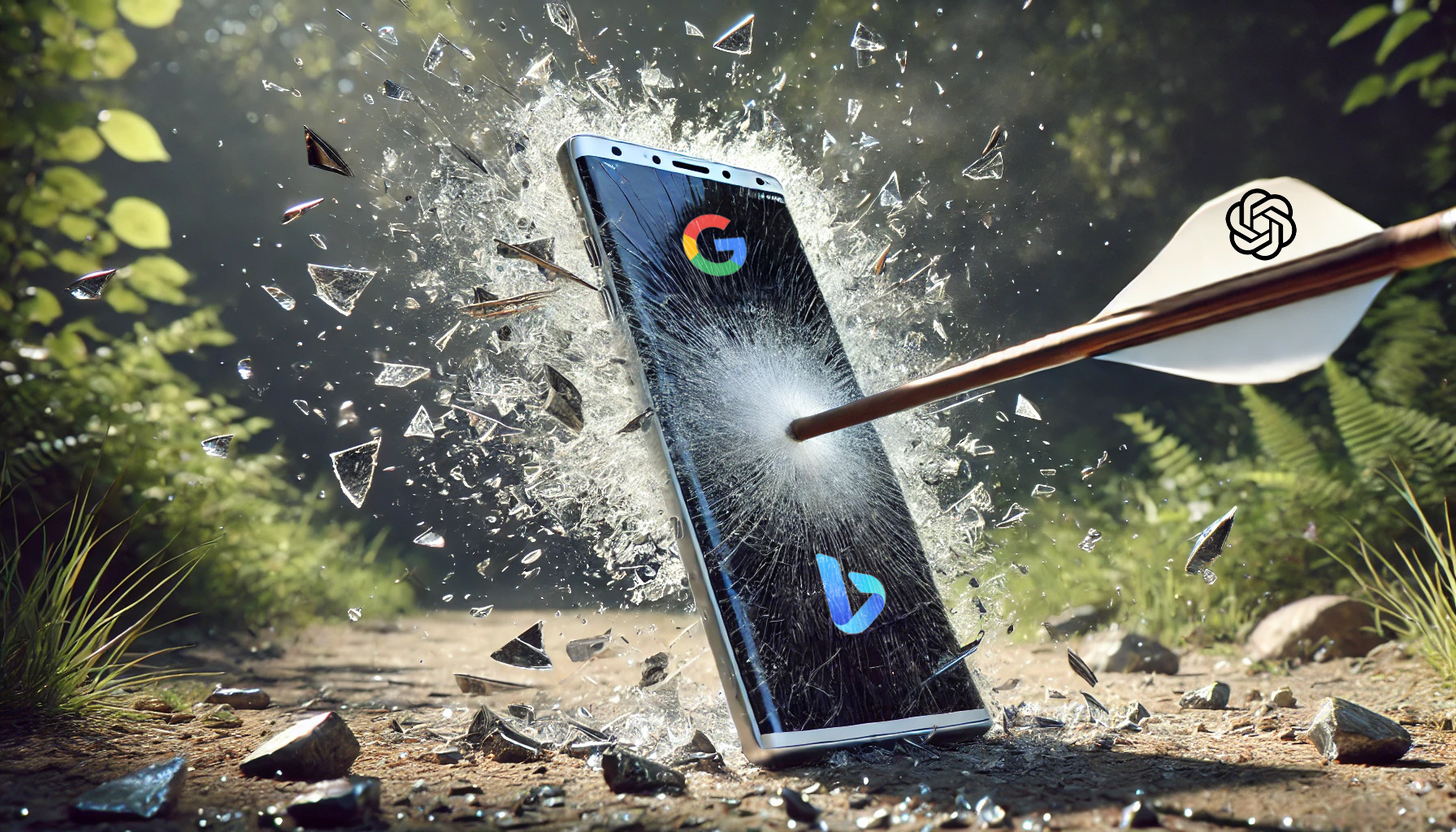Also published on The Chartered Institute of Marketing
Key Highlights
- Agent washing is a deceptive marketing practice where simple automation tools are mislabeled as advanced agentic AI systems, creating confusion in the market.
- True agentic AI possesses core capabilities such as autonomy, goal-orientation, and adaptability, allowing it to reason and act independently in real-world scenarios.
- Unlike basic automation tools or chatbots, which follow predefined scripts, genuine agentic systems can learn, make decisions, and manage complex tasks.
- Falling for agent washing leads to significant risks, including wasted investment, damage to brand safety, trust erosion, and a negative impact on key marketing metrics such as CAC and ROAS.
- Marketers must perform due diligence by using an agentic AI scorecard, running pilot tests, and looking for red flags to differentiate between authentic agentic AI and pseudo-agentic tools.
- Implementing human-in-the-loop (HITL) governance is crucial for ensuring brand-safe AI deployment, preventing model drift, and maintaining control over autonomous systems.
AI Washing: Companies Misusing AI for Hype?
AI washing occurs when companies exaggerate or misrepresent their AI capabilities to create hype. This practice can mislead consumers and investors, as businesses may claim advanced AI integration without substantial backing. Marketers must recognise this trend to maintain transparency and foster trust in genuine AI innovations while avoiding misleading narratives.
CMOs are being pitched “agentic AI”; systems that plan, act, learn, and provide explainable logs. However, many offerings are just basic automation rebranded as agents, creating confusion. This "agent washing" trend has led analysts to predict a high cancellation rate for agentic AI projects by 2027 due to unclear value and mislabelled capabilities. The real risk is lost credibility. Promised agents that turn out to be simple chatbots erode trust and slow real innovation. For marketers, knowing the difference between genuine agentic AI and hype is crucial to making smart investments and avoiding disappointment.
Understanding Agent Washing in AI Marketing
Agent washing is part of the broader “AI washing” trend, but it specifically misleads users about what AI agents can do independently. Companies often label basic scripts or rule-based systems as ‘AI agents,’ even though these lack the ability to make decisions and act toward goals without human input. This marketing tactic exploits excitement around autonomous AI, making it easy for marketers to be fooled. When these tools fail to deliver promised speed or intelligence, trust in both the vendor and AI technology suffers. Understanding agent washing is crucial for developing a reliable AI strategy in marketing automation.
Defining Agent Washing and Its Impact
Agent washing is when companies rebrand old products like chatbots or AI assistants as “agentic,” even though they lack true agent abilities. This misleads customers, who expect these tools to plan, decide, and act independently, but often get basic automation that requires constant human input.
A Gartner report found that few businesses selling agentic AI deliver on their promises. According to Anushree Verma from Gartner, this leads people to underestimate the costs and effort needed for effective AI systems. As a result, companies waste time and money on tools that don’t provide real business value.
Ultimately, agent washing erodes trust in AI products and slows adoption of genuinely advanced technologies by fueling skepticism and disappointment.
Distinction Between Agent Washing and AI Washing
AI washing is when a company exaggerates their use of artificial intelligence, claiming simple setups use advanced machine learning to appear more impressive and capitalise on AI hype. Agent washing is even trickier: it gives a false impression of how autonomous a tool really is. A true AI agent can assess situations, make decisions, and act independently toward a goal. An agent-washed tool, however, is usually basic automation (e.g. a chatbot or script following preset instructions) unable to learn or adapt beyond its programming. This matters because calling such tools "agents" misleads people into expecting smart, independent systems when they’re simply automated.
Why Agent Washing Has Risen in Popularity
The rise of "agent washing" stems from market trends and growing interest in agentic AI. As large language models advance, businesses seek autonomous agents, prompting vendors to label their products as "agentic" to attract attention and sales, even if they lack true capabilities. This marketing tactic aims to capitalise on the AI boom, but many tools don't deliver genuine learning or problem-solving. Companies drawn to these so-called "agents" risk investing in systems that require constant oversight, undermining business value and wasting resources. The rush to adopt new technologies often leads to costly mistakes when products are built on exaggerated claims rather than real innovation.
Real vs. Agent-Washed Solutions: Key Differences
Understanding the difference between true agentic AI and simple automation tools is crucial for making informed AI choices. Real agentic AI can act independently and reason, while pseudo-agentic tools only follow preset instructions. Agentic systems use natural language processing to understand and decide on actions; pseudo-agentic tools cannot, they only perform predefined tasks. Recognising these differences helps you look past marketing buzzwords and focus on actual capabilities. The following sections will highlight what agentic AI can do, what's lacking in imitation tools, and key concepts that set advanced AI apart.
Agentic AI: Core Qualities and Capabilities
True agentic AI has distinct qualities that set it apart from basic systems. These are essential to its function and interaction with the world. At its core, agentic AI acts independently with purpose, aiming for real outcomes rather than just following commands. The key difference from "agent-washed" solutions is the ability to think and act autonomously. As AI expert Yoav Shoham notes, we need clarity on what these systems must do, how independently they operate, and their effectiveness. Real agentic AI meets these criteria in several ways:
-
Autonomy: These systems can work on their own inside set limits. They do not need people to always tell them what to do. A real agent looks at what is going on, weighs up the options, and picks what it thinks is best.
-
Goal-Orientation: These agents are built to reach certain, clear goals. They look at each choice and ask, "Does this help me get to my end goal?"
-
Adaptability: These systems check new information all the time and update what they are doing as things change. A real agent learns from what happens and gets better as time goes on.
Pseudo-Agentic Tools: What They're Missing
Pseudo-agentic tools appear intelligent due to "agent washing," but are usually just basic automation or rebranded marketing platforms. They lack autonomy, learning, and true reasoning. These tools follow preset rules and triggers, performing tasks only when conditions match their programming. For example, a “sales agent” may automatically send emails after specific actions, but it doesn't understand intent, adapt, or learn from experience. If something falls outside its programmed rules, the tool stops or requires human help; it can't break down complex tasks or adjust based on new information.
The Risks of Agent Washing for Marketers Explained
Agent washing poses real risks for marketers beyond annoyance. Investing in tools that claim to be "AI agents" but offer only basic automation can waste money, damage campaigns, and erode competitive advantage. If these tools fail, issues can spread across your marketing team, impacting brand safety and differentiation. Over time, you may lose revenue and customer trust while bad experiences pile up. The next sections will detail these dangers and explain why it’s essential to vet new AI solutions carefully for your marketing campaigns.
Threats to Brand Safety and Market Differentiation
Agent washing can damage your brand and weaken your market position. Using AI tools that only pretend to be agentic puts your reputation at risk; especially if they respond poorly on social media. This kind of mistake can instantly harm how people see your business, and the damage may be lasting.
Relying on overhyped or generic AI tools instead of true agentic AI also erodes your unique advantage. You might think you're ahead, but basic automation makes you just like everyone else. True agentic AI should deliver a more personalised service and smarter solutions; falling for agent washing means missing out on these benefits and blending in with the competition.
Here are some of the biggest risks:
-
Reputational Damage: Using a weak AI tool can give customers a bad experience and lead to poor reviews. This hurts your brand so people may not trust it as much.
-
Loss of Competitive Edge: If you spend money on AI technologies that aren’t truly advanced, you will fall behind businesses who use better, real agentic AI
Economic Consequences: CAC/ROAS Implications
Beyond damaging their reputation, investing in "agent-washed" tools can drain a business’s finances. The main risk is wasting money on ineffective software. Additional costs arise from trying to fix or maintain these subpar tools. Gartner predicts over 40% of agentic AI projects will stall by 2027 due to rising costs and unclear value, a sign of widespread wasted investment.
For marketers, these issues directly impact key metrics such as customer acquisition cost (CAC) and return on ad spend (ROAS). True AI agents should lower CAC and boost ROAS by targeting the right audiences and automating complex tasks. But with basic automation or “agent washing,” these benefits disappear, leaving high CAC and stagnant ROAS.
You may pay extra for so-called “agentic” features that don’t deliver results, meaning no revenue growth or cost savings, just wasted time, money, and missed opportunities. In the end, you’re left with all the expenses of agentic AI but none of the promised gains.
Trust Erosion and Long-Term Business Impact
The most damaging effect of agent washing is long-term loss of trust. When AI agents or products fail to deliver as promised, customers feel let down and begin to doubt the brand and future vendors. This hesitation slows adoption of new technology.
Agent washing also erodes trust in your brand. If your AI chatbot is unhelpful or inaccurate, customers blame your company, not the technology. Even one poor experience can drive them away and affect their future behavior.
For businesses, this means it's harder to retain customers, attract new ones, and grow brand reputation. Failed AI projects reduce confidence in adopting new solutions, lowering the overall value seen in AI. Ultimately, agent washing breaks the cycle needed for progress and innovation.
Detecting Agent Washing in Vendor Offerings
With bold claims flooding the market, spotting agent washing is essential. Don’t rely on vendor statements alone; ask smart questions, request proof, and learn to identify genuine agentic systems. Maintain healthy skepticism to protect yourself from misleading ads. Create a simple plan to evaluate AI technologies and vendors for trustworthiness and independence. The following sections will guide you past the hype, helping you make informed choices based on real agentic systems, not just marketing buzzwords.
Agentic Credibility: Proof Points and Scorecards
To verify if a product is genuinely agentic or just using "agent washing," establish a system to validate vendor claims beyond marketing materials. Create an agentic AI scorecard with objective criteria to assess true intelligence, focusing on observable behaviours. Request case studies with specific data, live demos showing autonomous decision-making in new scenarios, and access to logs or dashboards revealing the agent's reasoning. Transparent vendors confidently share how their technology works. A simple scorecard systematically checks for genuine agentic AI traits, ensuring a rigorous evaluation beyond feature lists.
|
Proof of Autonomy |
Can the vendor demonstrate the tool making decisions without human input in a real-time, unscripted scenario? |
|
Learning & Adaptation |
Are there clear examples or data showing the system's performance improving over time as it processes new data? |
|
Goal-Orientation |
Is the tool's purpose defined by achieving complex business goals (e.g., "reduce CAC by 10%") or just executing simple tasks (e.g., "send an email")? |
|
Transparency & Observability |
Does the vendor provide access to logs or analytics that explain why the agent made a particular decision? |
Red Flags and Common Misrepresentations
Besides active auditing, there are clear warning signs to help spot agent washing when evaluating vendors. The most common is vague, trendy language without specific claims; if a vendor repeats words like "autonomous," "intelligent," or "agentic" but can't clearly explain what the system does, be cautious. Another red flag is talk of connecting data silos without explaining how the system actually uses that data to make decisions. Simply moving or combining data doesn’t make a tool an agent; true agents analyse data and act independently.
Beware of overly polished demos that only show pre-selected tasks. If the vendor won’t let you test the system with your real-world problems, it likely lacks flexibility. A genuine agent should handle varied situations, not just scripted ones.
Human-in-the-Loop (HITL) Governance and Its Importance
Even with agentic AI, you don’t always want it to operate alone, especially for important marketing tasks. Human-in-the-loop (HITL) governance combines AI speed and power with human oversight. HITL allows AI to work independently but adds checkpoints for human review and approval, creating a collaborative approach rather than full control. This ensures safe, compliant marketing automation and protects your brand. Using agentic AI correctly is crucial. Next, we'll explore how HITL balances control and autonomy, improves brand safety, and prevents issues like model drift.
The Role of HITL in Brand-Safe AI Deployment
Human-in-the-loop (HITL) governance is essential for safe AI use in customer service. AI agents can make mistakes that harm your brand if unchecked. HITL ensures AI actions align with your brand’s voice and values.
Agent-washed AI chatbots often fail to understand customers, giving wrong or irrelevant replies that damage your reputation. A true agentic AI system combined with HITL handles routine and complex queries well, passing difficult issues to human agents when needed. This keeps support reliable and customers satisfied.
With HITL, AI manages everyday questions while humans handle sensitive tasks, speeding up service and improving quality. Humans and AI work together as equals to consistently protect your brand during customer interactions.
Evaluating AI Marketing Tools for Agentic Capability
The true test of any AI marketing tool is its performance in daily use. To assess agentic systems, go beyond demos and feature lists, evaluate each tool step by step. Score them on key criteria, run clear tests, and review technical features that enable autonomy. This thorough approach ensures you select tools that deliver real value for your business. By following a routine method, you can confidently navigate the crowded market and choose solutions aligned with your goals. The next sections will outline an easy plan, including using a scorecard, running pilot tests, and checking essential technical aspects.
AI Pilot vs. Control Testing for True AutonomyTo avoid losses from agent washing, run a pilot vs. control test. This method shows the true impact of an AI agent on key metrics. Create two groups: the pilot group uses the AI agent for a task (e.g., ad campaigns or sales leads), while the control group uses your usual methods. Compare results using metrics like conversion rates, CAC, or ROAS. If the AI agent doesn’t outperform the control group, it lacks real value. This honest testing helps ensure you invest only in technology that delivers genuine results, not just hype.
Industry Case Studies: AI Agent Washing in Practice
Agent washing is a growing real-world issue, often first encountered by marketing teams. While few companies admit being misled, disappointment is common. Examining case studies and examples reveals key lessons about agentic AI for potential investors. The following sections highlight notable cases of agent-washed tools, marketing failures, and genuine successes, showing the impact of agent washing and what to watch for with agentic AI.
High-Profile Examples of Agent Washed Tools
Analyst reports may not name companies directly, but "agent washing" is easy to spot. Many social media tools are now branded as “AI agents,” though they’re just old content schedulers or comment bots. These tools only post pre-approved content or follow basic if-then rules; just rebranded automation scripts that can’t understand conversations, adapt to trends, or change strategies. Buyers expect smart management but get the same confusing automation as before. Similarly, “AI sales agents” are often just advanced email sequencers that follow preset steps and can't interpret replies or make decisions independently. Calling these products "agents" is mainly marketing, not a reflection of their real capabilities.
Lessons Learned from AI Pilot Deployment Failures
Agent washing in marketing can damage your brand and reduce AI effectiveness. Over-relying on tools you don’t fully understand is risky; mistakes hurt your brand, not the tool’s creator. Choose technology based on clear goals, not trends, and always assess a tool’s real capabilities before use. Lasting customer connections require genuine intelligence, human or AI. Thoughtful adoption of AI delivers better results than rushing in.
Success Stories of Agentic AI Implementation
Agentic AI delivers superior results compared to “agent washing.” Marketers using true intelligent agents benefit from faster campaign execution, real-time market analysis, and automated ad spend optimisation, tasks beyond human capability. A key advantage is hyper-personalisation: agentic AI tailors messages to individual customers, boosting engagement, sales, and loyalty. Success comes from collaboration; AI generates and tests campaign ideas at scale, while marketers refine strategy and make final decisions, enhancing creativity and efficiency.
Best Practices to Avoid Agent Washing in Marketing
Navigating AI can be tricky amid the hype. Stick to clear best practices to avoid AI washing and poor investments. Be transparent and thorough when choosing vendors and adopting AI. Focus on due diligence and long-term planning to protect your budget, brand, and marketing automation efforts. Next, you'll find tips for effective AI adoption and partnering, helping you secure lasting value as the market evolves.
Choosing Vendors with Transparent Agentic Claims
The quickest way for marketers to spot agent washing is to ask vendors for transparency. A genuine agentic AI vendor should clearly explain how their tool works, what it does, and its limitations. Excessive jargon or vague answers are red flags. Transparency builds trust.
When evaluating an AI tool, request a live, unscripted demo solving one of your real business problems. This reveals if the tool truly has agentic intelligence or just basic automation. An open vendor will welcome the opportunity to prove their technology’s capabilities.
When you judge vendors as you build your marketing strategy, there are key signs to look for, showing honesty:
-
Clear Definitions: The vendor gives a simple meaning for "agentic" and can say how their product is not just basic automation.
-
Access to Experts: You get to talk to their technical side, not only sales staff, so you can ask all types of questions about the ai’s setup and skills.
-
Honesty About Limitations: The vendor is honest about what their agentic AI cannot do.
Building Resilient AI Strategies for Long-Term Value
To avoid costly mistakes with agent washing, companies should focus on long-term business value, not short-term trends. Start by identifying real business problems and choosing AI technologies that solve them, rather than chasing what's popular. Build a flexible AI strategy that adapts as technology evolves, test new tools, learn from mistakes, and encourage continuous learning within your team.
Balance innovation with practical thinking. Demand proof for bold claims, stay focused on measurable business value, and require transparency from vendors. Foster accountability to build trust and secure lasting competitive advantage while preventing agent washing.
Conclusion: Avoid Agent Washing Vendors
In marketing, staying updated on AI trends is challenging, especially with the rise of "agent washing." Marketers must distinguish genuine agentic AI from those merely claiming autonomy to avoid brand and financial risks. Understanding agent washing enables smarter decisions and builds trust. Use tools like an agentic AI scorecard to verify vendors' claims. Always double-check offerings and monitor developments. Share your thoughts or experiences with agent washing in the comments below.
Frequently Asked Questions
How can marketers quickly spot agent washing during vendor selection?
Marketers can detect agent washing by requesting clear answers and proof when evaluating a tool. Ask vendors to define "agentic" and provide an unscripted live demo to observe real decision-making. Be cautious if they use vague language or stick to generic presentations. Review past customers and score the tool against key agentic AI criteria, such as learning ability, goal-setting, and adaptability.
Does agent washing affect customer service AI and chatbots?
Agent washing significantly affects customer service AI and chatbots. Companies may market basic, rule-based chatbots as advanced “agents” capable of handling complex questions. In reality, these agent-washed tools often fail to understand user behavior or provide helpful answers, leading to frustration and damaging the brand’s reputation. Instead of improving customer service, they create more work for human agents who must correct the bot’s mistakes.
What steps should enterprises take to prevent costly agent washing mistakes?
Enterprises can lower risks by:
- Defining AI strategies focused on real business needs, not hype.
- Running pilot and control tests to verify vendor claims before major investments.
- Requesting clear information and regular updates from vendors, and comparing market data with their own results to confirm promised value.
This approach reduces financial risk and improves the chances of successful AI adoption.
What are the top real-world applications of AI agents
AI agents are integrated into a wide range of industries to automate processes, enhance decision-making, and improve efficiency.
Customer service and marketing
Chatbots and virtual assistants: AI agents, such as conversational chatbots, handle customer inquiries, process orders, and provide personalised support 24/7 on websites and social media.
Personalised marketing: AI agents analyse customer behaviour and data to generate personalised product recommendations and targeted marketing campaigns.
Lead generation: Sales agents can autonomously scan the internet for potential customers and qualify them based on specific criteria.
Finance and risk management
Fraud detection: Financial institutions use AI agents to monitor transaction patterns in real-time, flag suspicious activity, and prevent fraudulent transactions.
Automated trading: AI agents execute complex trading strategies in milliseconds by analysing market trends and data.
Financial modelling and forecasting: AI agents analyse vast datasets to produce accurate cash flow forecasts and risk assessments, helping businesses make informed strategic decisions.
Transportation and logistics
-
Autonomous vehicles: Self-driving cars rely on multiple types of AI agents to perceive their environment, navigate roads, and make real-time driving decisions.
-
Supply chain optimisation: AI agents coordinate inventory management, track shipments, and optimise delivery routes to improve efficiency and reduce costs.
-
Warehouse automation: Multi-agent systems coordinate autonomous robots to streamline order picking, sorting, and inventory management in warehouses.
Smart home and robotics
Smart home management: AI agents learn user routines and optimise energy consumption, adjust climate control, and manage security systems for enhanced convenience and efficiency.
Robotics in manufacturing: Industrial robots use AI agents for predictive maintenance, quality control, and performing high-precision assembly tasks.
Space exploration: Highly sophisticated autonomous agents, such as NASA's Mars rovers, explore planets and conduct experiments with minimal real-time human intervention due to communication delays.
Healthcare
Medical diagnostics: AI agents analyse medical images and patient data to help doctors detect diseases, provide early warnings, and assist with complex diagnoses.
Clinical trial matching: AI agents can match patients with suitable clinical trials based on their medical history and conditions.
Virtual assistants for patients: AI-driven virtual nurses can monitor patients remotely, track symptoms, and manage medication reminders.
Software and IT
Code generation and testing: AI agents assist developers by generating code, debugging issues, and automating repetitive software testing tasks.
IT support: AI virtual agents can troubleshoot technical issues, manage software updates, and handle password resets, reducing manual IT support workload.
Workflow automation: AI agents can manage routine tasks, such as scheduling meetings and processing invoices, by integrating with existing software applications.





